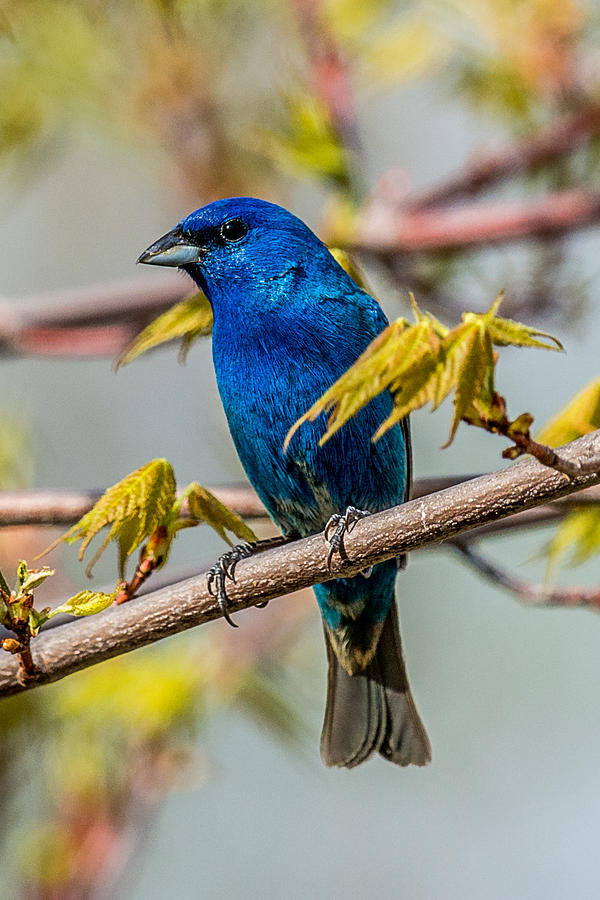
Connecticut Audubon is creating and managing the early successional habitat that these birds need in Pomfret, and at the Chaney Preserve in Montville, the Smith Richardson Preserve in Westport, the Croft Preserve in Goshen, and elsewhere. Many early successional bird species, including Common Yellowthroats, Blue-winged Warblers, and Eastern Towhees, are found in the same habitat. Smith Richardson Sanctuary in Westport, and Banks South Farm Sanctuary in Fairfield.

You can also look for Indigo Buntings at our Pratt Sanctuary in New Milford, H. In reality, however, that bright blue is merely an illusion. Male Indigo Buntings are brilliant blue both above and below. Female Indigo Buntings are drab brown in color as befits a Mom who raises several broods of chicks in the underbrush just a few feet above the ground. In September and October the Sunflower field at the Pomfret sanctuary usually has a couple dozen Indigo Buntings feeding in it. Indigo Buntings are only solid blue bird in the eastern United States. The nest cup is about 1.5 inches deep inside, with an outside diameter of 3. What does indigo bunting mean Information and translations of indigo bunting in the most comprehensive dictionary definitions resource on the web. She locates the nest in a crotch or fork where branches meet, amid a supporting network of vertical and diagonal twigs. Definition of indigo bunting in the dictionary. The hedgerow at the parking lot and the trail behind the nature center always have at least one singing male.Īt the Trail Wood sanctuary check the scattered trees in the Starfield meadow. The female Indigo Bunting builds the nest alonea process that takes up to 8 days early in the season and as little as 2 days later in the summer. The males call from the tops of the tallest tree or bush along the hedgerows and fields. The Pomfret sanctuary has many nesting pairs around the edges of our fields. Indigo Buntings are possible at any of the Connecticut Audubon Society sanctuaries, or other natural areas, that have brushy meadows and brushy field edges.Īn Indigo Bunting in October. Their preferred food is insects and seeds. They are migratory birds that often use the stars to navigate as they migrate at night. Indigo Buntings will visit bird feeders in May during the spring migration and usually switch over to natural foods by June. Indigo buntings ( Passerina cyanea) are dainty birds found mostly from southern Canada to northern Florida during the breeding season and southern Florida to northern South America during the winter months. You can find them throughout the state, along the edges of fields, power line rights-of-way, early successional habitats, and weedy fields. Indigo Buntings are a little over five inches long, or similar in size to a goldfinch.

In fall during migration the males molt into the brown color but the oldest males will still retain a few blue feathers. Females and young birds are a chocolate brown. Male Indigo Buntings are a brilliant deep blue in spring and summer. Is the strikingly-plumaged Indigo Bunting up to the popularity challenge posed by the brilliant orange of the Baltimore Oriole or the brilliance of the Scarlet Tanager, both long-time favorites?īy Andy Rzeznikiewicz, Sanctuary Manager, Northeast Connecticut

Indigo Bunting singing at the Smith Richardson Preserve.


 0 kommentar(er)
0 kommentar(er)
